Malkovich? Malkovich, Malkovich, Malkovich. Malkovich!
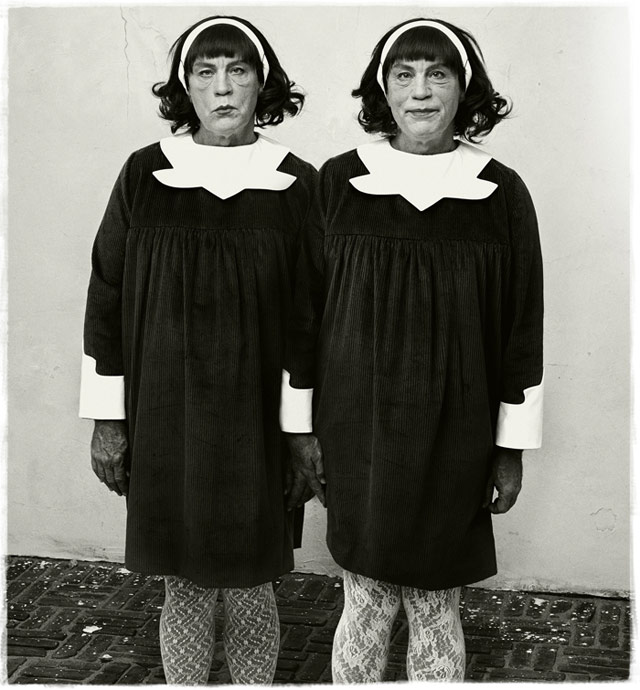

From photographer Sandro Miller, in collaboration with the actor himself, recreations of iconic photographs with John Malkovich in place of the original subjects.



This site is made possible by member support. 💞
Big thanks to Arcustech for hosting the site and offering amazing tech support.
When you buy through links on kottke.org, I may earn an affiliate commission. Thanks for supporting the site!
kottke.org. home of fine hypertext products since 1998.


From photographer Sandro Miller, in collaboration with the actor himself, recreations of iconic photographs with John Malkovich in place of the original subjects.
Conflict photographer Ashley Gilbertson recently embedded himself in the video game The Last of Us Remastered and sent back a selection of war photos.
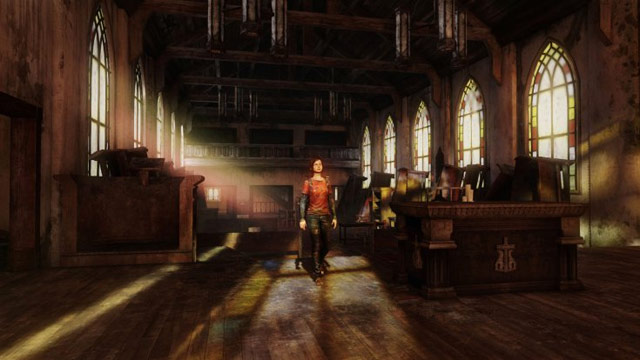
Reminds me a bit of Jim Munroe’s My Trip to Liberty City, a film made from the perspective of a tourist visiting the city featured in Grand Theft Auto III:
(via @atotalmonet)
Update: New Gamer took photos of a road trip in Grand Theft Auto: San Andreas. (via @johnke)
We’ve been using Eyefi cards to upload photos from the kids’ cameras to Flickr. Matt Haughey has a review of their newest card, the Eyefi Mobi, which automagically syncs to your phone, resulting in a 20-second DSLR-to-Instagram workflow.
In essence, the card turns any dumb camera into an outboard lens for your phone. Last week on a trip to NYC I took my new compact camera with me and could easily upload photos to Instagram and Twitter within seconds of taking the photos. I mean that literally: I can take a photo with my camera, open up my phone, touch the mobi app icon and about ten seconds later I can be saving that image to my phone’s camera roll. I could also manipulate and tweak the images in a plethora of iPhone apps like VSCOcam, Photoshop Express, etc. directly on the phone before sharing it out to the world.
This sounds amazing. Step one for me: get a camera. Any suggestions? I’ve been eyeing Fujifilm’s X100S for quite awhile…
Getty Images photographer Justin Sullivan recently captured some photos of lakes in California showing the extent of the drought there. For me, this is the craziest one, of Bidwell Marina at Lake Oroville:

And this is what it normally looks like:
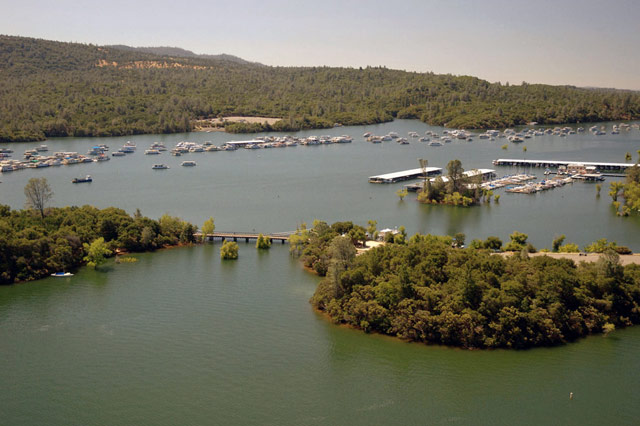
In 1984, Daniel Root took photos of the East Village in NYC. Root is revisiting the locations of those photos and posting comparisons to a Tumblr.

Wish the images were bigger…370x250 is more of a 1984 resolution.
World War II began 75 years ago today with Germany’s invasion of Poland. A few years back, Alan Taylor did a 20-part photographic retrospective of the war for In Focus, which is well worth the time to scroll through.
These images still give us glimpses into the experiences of our parents, grandparents and great grandparents, moments that shaped the world as it is today.
Life has a collection of color photos of the invasion of Poland. Time has a map dated Aug 28, 1939 that shows how Europe was preparing for war, including “Americans scuttle home”.
In celebration of National Aviation Day, In Focus has a slideshow of photos of the Wright Brothers’ first flights.
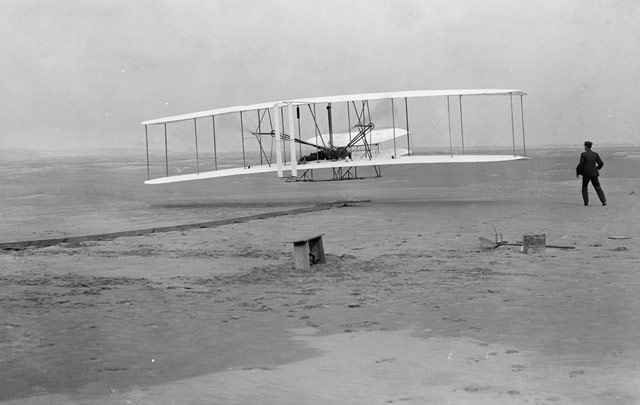
The caption on that photo reads:
First flight: 120 feet in 12 seconds, on December 17, 1903. This photograph shows man’s first powered, controlled, sustained flight. Orville Wright at the controls of the machine, lying prone on the lower wing with hips in the cradle which operated the wing-warping mechanism. Wilbur Wright running alongside to balance the machine, has just released his hold on the forward upright of the right wing. The starting rail, the wing-rest, a coil box, and other items needed for flight preparation are visible behind the machine. Orville Wright preset the camera and had John T. Daniels squeeze the rubber bulb, tripping the shutter.
The Wright Brothers were 32 & 36 years old when they made their first flight at Kitty Hawk in 1903. The Wright Flyer was not the product of daring youthful innovation (as with Picasso, Bill Gates, or Mozart) but rather of years of experience and experimentation (like Cezanne, Twain, or Frank Lloyd Wright).
People are taking photos of statues that cleverly make it look as though the statues are taking selfies.
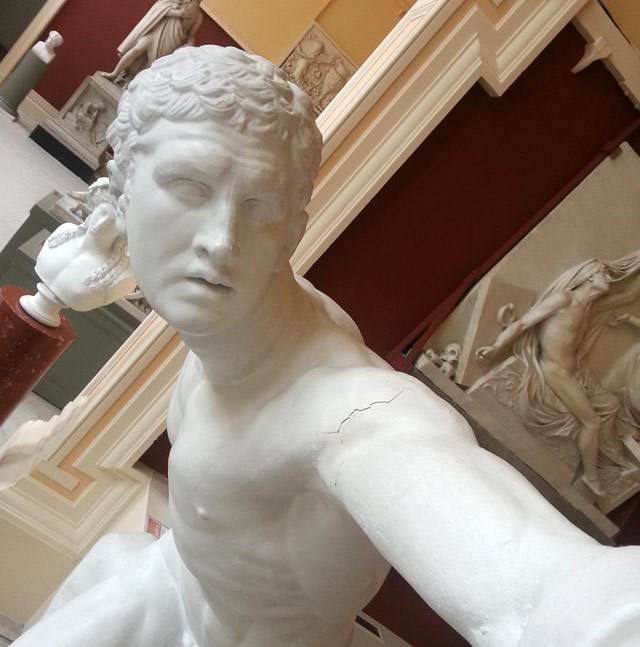
There’s a group on Reddit but most of the photos really aren’t that good. There are more examples on Instagram, including this one and this one from June that predate the activity on Reddit. But the earliest instances I found of statue selfies were this Instagram photo from The Art Institute of Chicago and this tweet featuring the Statue of Liberty, both from December 2013.
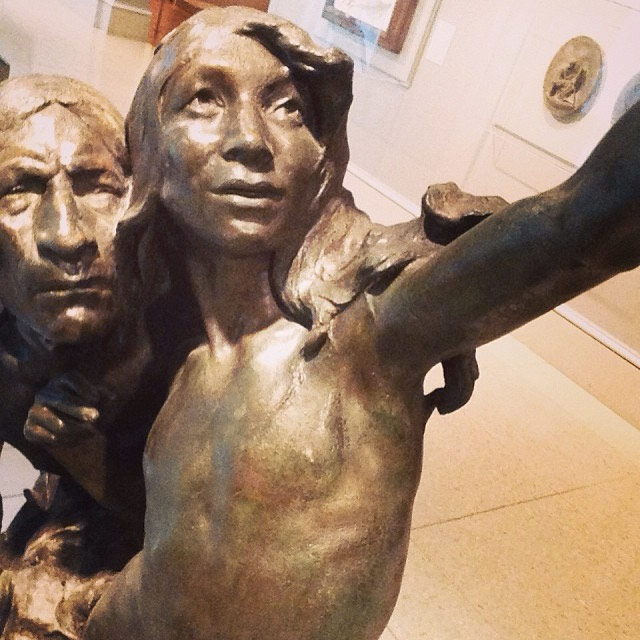
(via @ThatAmelia)
Update: See also Museum of Selfies.
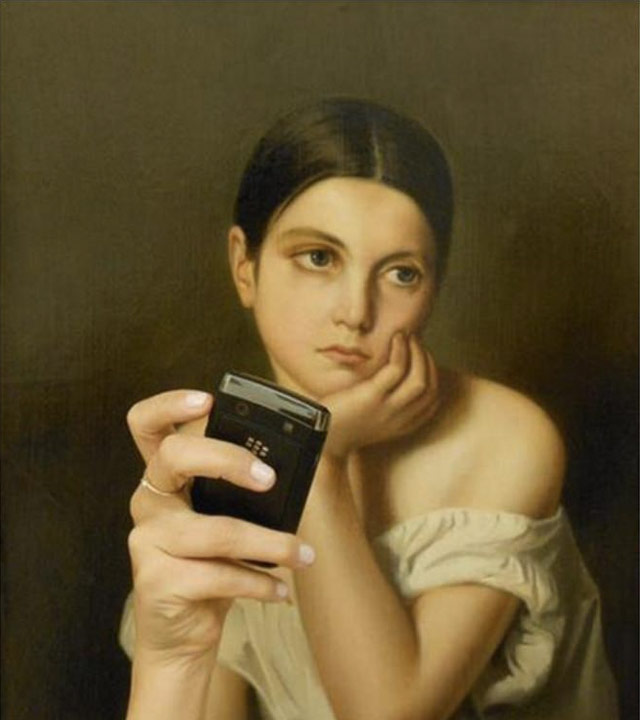
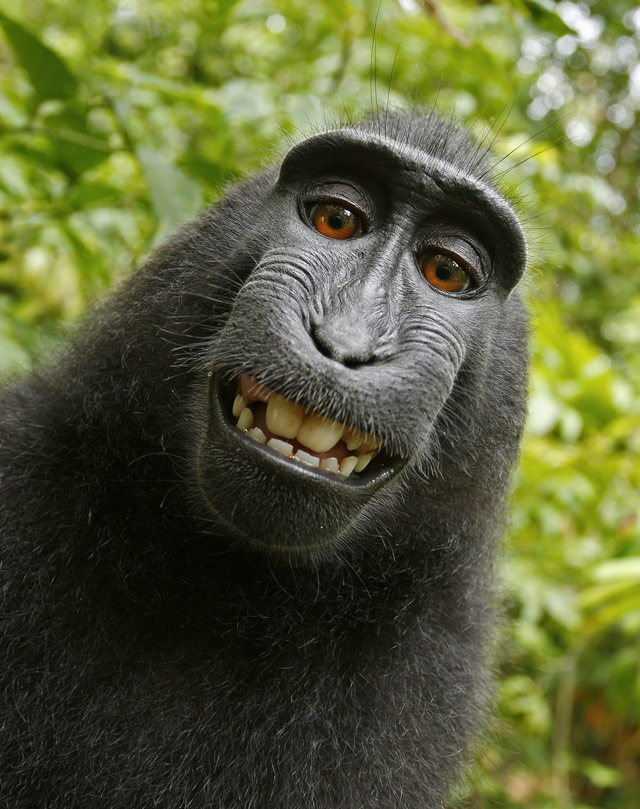
Photographer David Slater wants Wikipedia to remove his photograph of a monkey taking a photo of itself but Wikipedia has refused, saying that as the monkey was the photographer, Slater has no right to the copyright to the photo.
The Gloucestershire-based photographer now claims that the decision is jeopardising his income as anyone can take the image and publish it for free, without having to pay him a royalty. He complained to Wikimedia that he owned the copyright of the image, but a recent transparency report from the group, which details all the removal requests it has received, reveals that editors decided that the monkey itself actually owned the copyright because it was the one that pressed the shutter button.
But shouldn’t Wikipedia take it down anyway because they don’t have the monkey’s permission to release the photo into the public domain? (I mean, probably not…monkeys don’t have any rights under the law, yes?) (via @capndesign)
Update: A previous version of this post stated that Wikipedia said that the monkey held the copyright. They said no such thing…that was my poor paraphrase. In the US at least, monkeys obviously can’t hold copyrights. From the Compendium II of Copyright Office Practices, section 202.02(b) states:
The term “authorship” implies that, for a work to be copyrightable, it must owe its origin to a human being. Materials produced solely by nature, by plants, or by animals are not copyrightable.
Interesting phrase, “owe its origin to”…perhaps Slater has a point. (via @stvnrlly)
Update: According to a recent 1000+ page document produced by the US Copyright Office, a photograph taken by a monkey is “unprotected intellectual property”.
The US Copyright Office, in a 1,222-page report discussing federal copyright law, said that a “photograph taken by a monkey” is unprotected intellectual property.
“The Office will not register works produced by nature, animals, or plants. Likewise, the Office cannot register a work purportedly created by divine or supernatural beings, although the Office may register a work where the application or the deposit copy state that the work was inspired by a divine spirit,” said the draft report, “Compendium of US Copyright Office Practices, Third Edition.”
Update: PETA has filed a lawsuit on behalf of the monkey photographer, seeking to award the copyright and any sales proceeds to the monkey. Alt headline: PETA Thinks Famous Monkey Photographer Is Too Stupid To Manage Own Money.
Alan Taylor has concluded his 10-part series on WWI over at In Focus with a look at the present-day effects of the war. If you haven’t been following along, it’s worth starting at the beginning and working your way through.
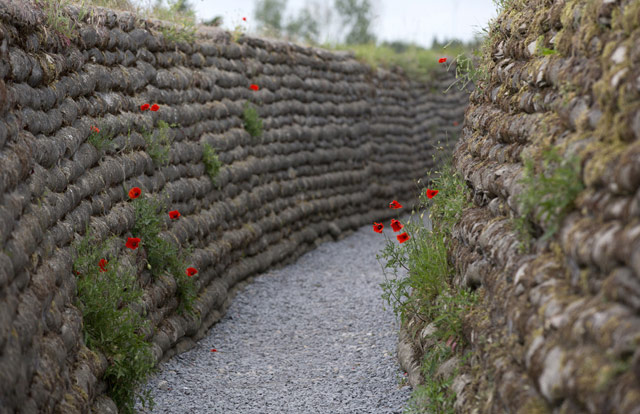
Also worth a look is the NY Times’ interactive package about the war.
Apple is stopping development of Aperture and iPhoto in favor of its new Photos app.
“With the introduction of the new Photos app and iCloud Photo Library, enabling you to safely store all of your photos in iCloud and access them from anywhere, there will be no new development of Aperture,” said Apple in a statement provided to The Loop. “When Photos for OS X ships next year, users will be able to migrate their existing Aperture libraries to Photos for OS.”
I wonder if the Photos app will be geared at all towards semi-pro/pro photographers or if they’ve permanently ceded that market to Lightroom.
Beginning in 1991, Zed Nelson took a photo of the same family (father, mother, and son) in front of the same backdrop every year for 21 years. Here’s the first photo:

And the most recent one:
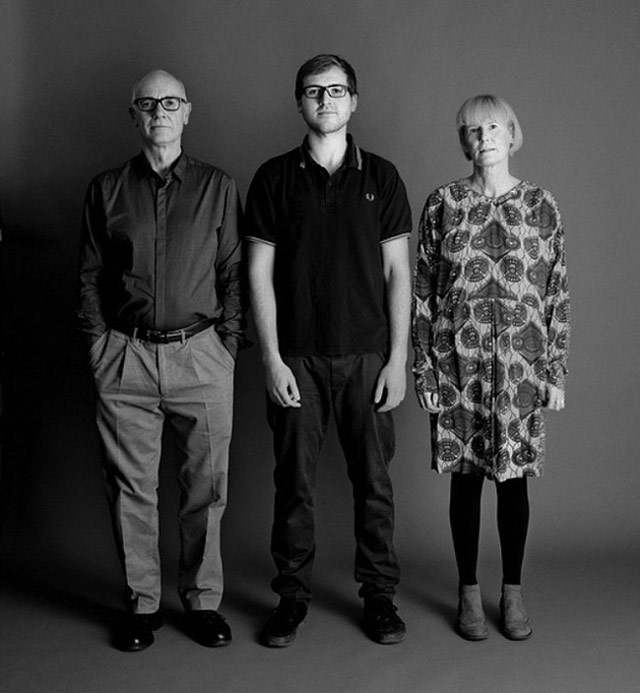
There are many more such projects, including the Goldberg family’s annual portraits, Nicholas Nixon’s annual portraits of The Brown Sisters, and Noah Kalina’s Everyday.
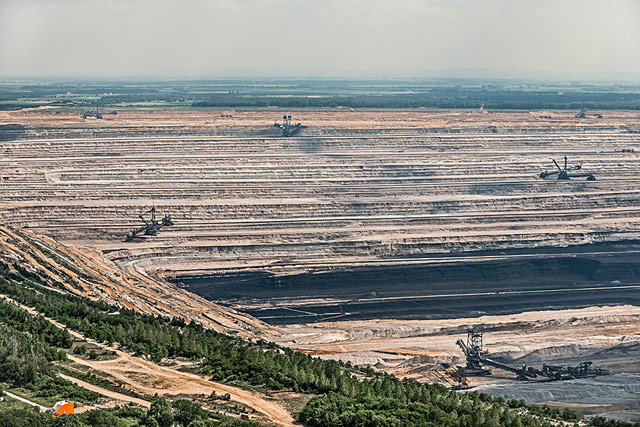
From Bernhard Lang, aerial photos of the largest made-made hole in Europe, the Hambach Mine in Germany. The mine was started in 1978, is 1150 feet deep, and will eventually encompass an area of over 32 square miles. Here’s the mine on Google Maps; it’s huge.
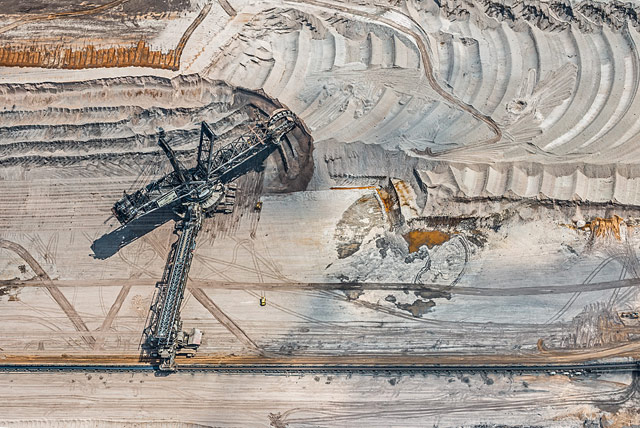
That’s a photo of one of the massive mining machines used to extract lignite (aka “brown coal”) from the mine. The machines are almost 800 feet long and 315 feet high…those yellow specks to the right of the machine are likely fairly sizable construction trucks. (via co.exist)
You’ve probably seen Bruce Davidson’s photos of the gritty 1980s NYC subway, which were collected into a book published in 1986.
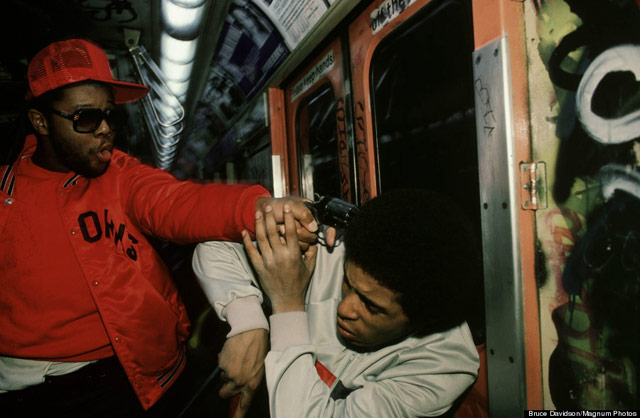
Earlier this year, Time posted some previously unpublished photos of the NYC subway taken in 1981 by Christopher Morris, an admirer of Davidson’s.


The NY Times has a bunch of photos by Seth Casteel of babies undergoing infant survival swim training.
Zoe was being introduced to “self-rescue,” in which babies are taught to hold their breath underwater, kick their feet, turn over to float on their backs and rest until help arrives.
The self-rescue idea is pretty amazing. You take kids who can’t talk and can barely walk and teach them how to float on their backs. I didn’t really believe it until I saw it:
Bonus summer PSA: drowning doesn’t look like drowning.
I’ve seen the waterfalls and the hot springs and the rocky desolation, but I didn’t know that Iceland was also this:
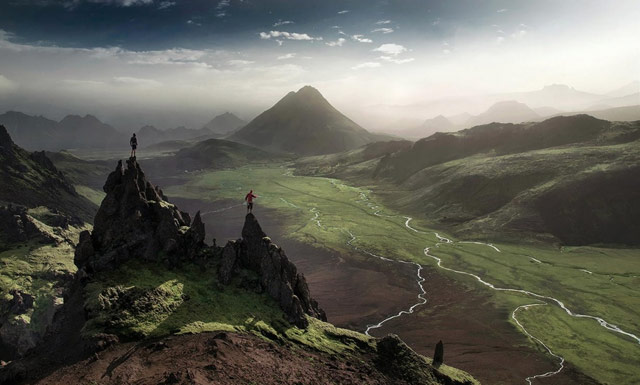
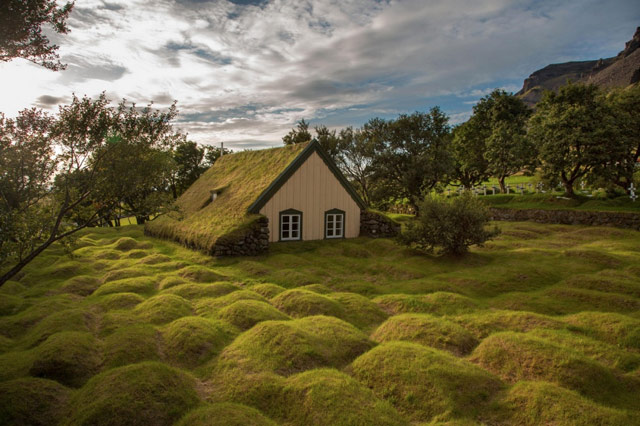
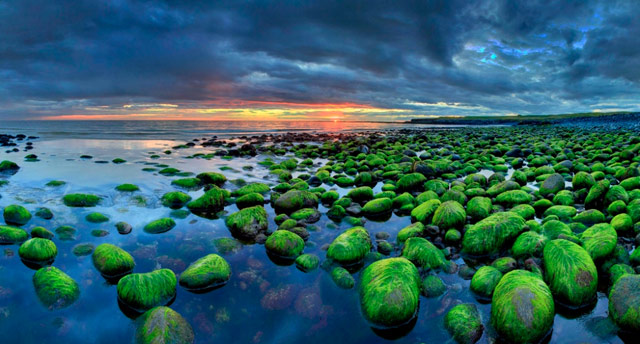
I mean, come on. Photos by Max Rive, Menno Schaefer, and Johnathan Esper. Many more here. (via mr)
The IPPAWARDS has been judging an iPhone photography competition since 2007 and they recently announced the winners of their 2014 competition.
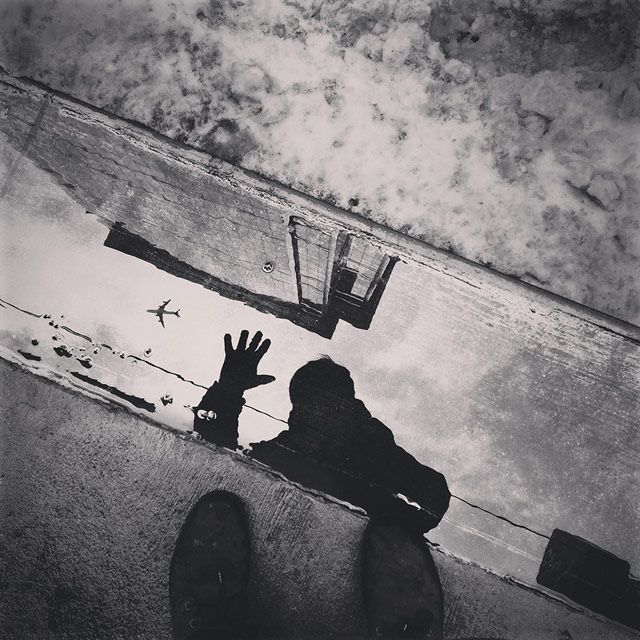
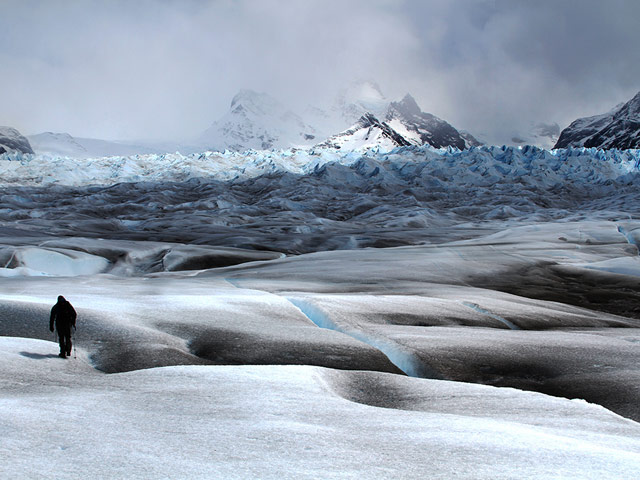
Impressive stuff. I’ve been saying recently that the iPhone 5s is the best camera in the world. Looking back on the 2008 winners, it becomes apparent how much more comfortable photographers have become wielding this increasingly powerful device. (via the verge)
Speaking of WWI, the landscape of the Western Front in Europe still shows the scars from the war 100 years on.
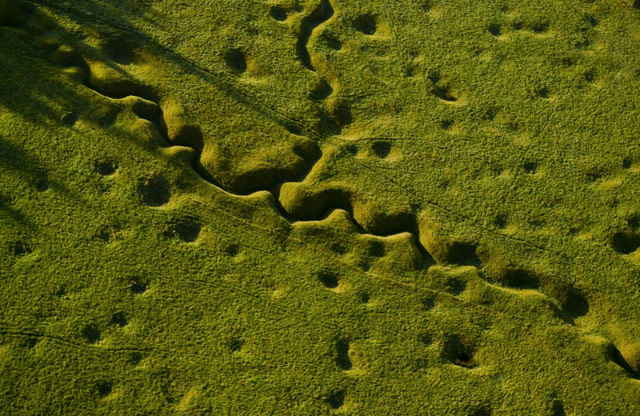
The latest installment of the In Focus series on WWI is Aerial Warfare.
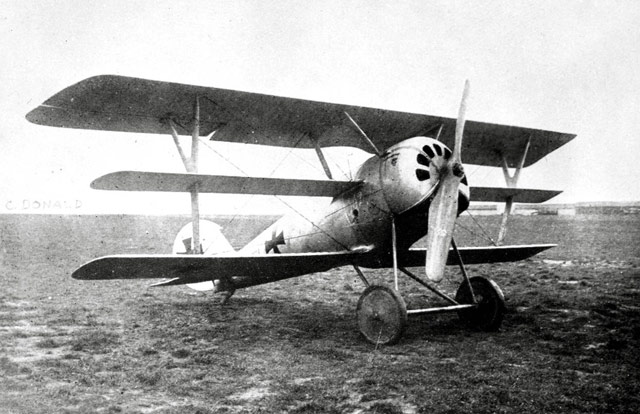
Great series so far, really enjoying it. Start from the beginning if you haven’t seen it yet.
Photographer Alec Soth is interviewed by his young son Gus about his job, art, and leaving his family for work.
This is completely charming and awesome and heartbreaking. (via @polan)
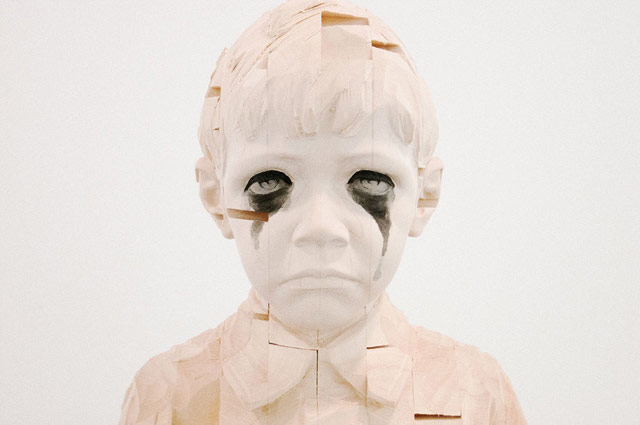
Clayton Cubitt took photographs of The Beautifully Frightful Wooden Children of Gehard Demetz, now on display at Jack Shainman Gallery in Chelsea. From the gallery’s description of the project:
With impeccable craftsmanship, Demetz builds figures and reliefs of children and rural, often religious, architectural forms. While his subjects often take the forms of adolescent or very young children who are at the precipice of self-realization, their grave expressions and powerful stances suggest something much less innocent than their ages might suggest. Situated on plinths, these life-size works are elevated above their natural stature, allowing them to confront adults at eye level with a fierce or introspective gaze far beyond their years. Rather than being carved from a single large block of wood, these sculptures are built up from smaller rectangular units-mimicking classic building blocks-with gaps in their structures like pieces missing from their bodies or lost fragments of their being.
Back in January, an astronaut on the International Space Station took this photograph of the Korean Peninsula, which shows the stark difference in nighttime light levels in North Korea compared to the neighboring countries of South Korea and China.
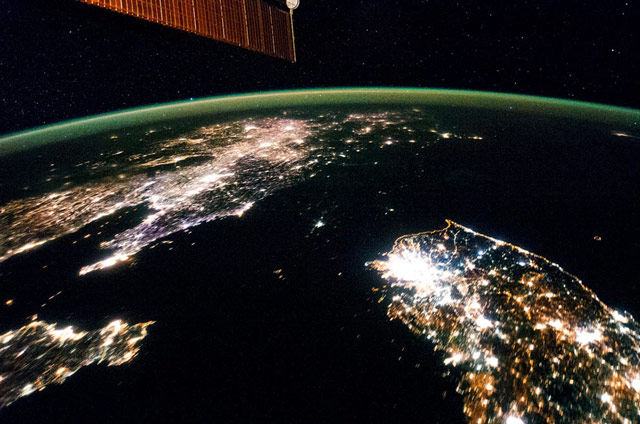
I remember seeing a satellite photo several years ago, thought it was fake, then heard it had been photoshopped to accentuate the darkness, and dismissed the whole thing as a hoax. I can’t believe the whole country is that dark. (via in focus)
From Annalisa Hartlaub, a series of self-portraits portraying “culture and counterculture for the past 10 decades”. Here is her representation of the 1960s (culture on the left, counterculture on the right):
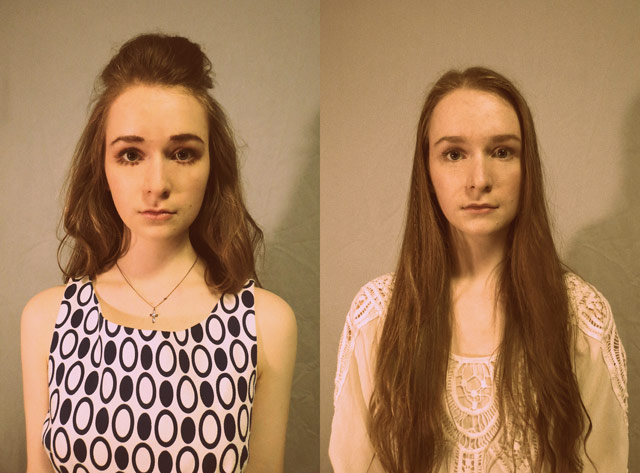
In the latest installment of his ten-part series on WWI, Alan Taylor covers the technology used in the war.
When Europe’s armies first marched to war in 1914, some were still carrying lances on horseback. By the end of the war, rapid-fire guns, aerial bombardment, armored vehicle attacks, and chemical weapon deployments were commonplace. Any romantic notion of warfare was bluntly shoved aside by the advent of chlorine gas, massive explosive shells that could have been fired from more than 20 miles away, and machine guns that spat out bullets like firehoses. Each side did its best to build on existing technology, or invent new methods, hoping to gain any advantage over the enemy.
It’s fascinating to observe both sides using trial and error with things like tanks, testing out what works and what doesn’t. Look at this kooky German cannon for instance:

Nothing about that looks efficient.
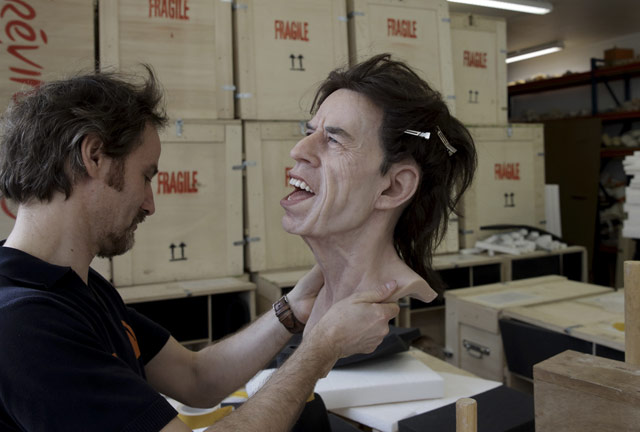
Alan Taylor has started doing weekly round-ups of interesting photos at In Focus. This is my favorite from last week’s batch, the head of Mick Jagger, destined for a wax museum in Prague.
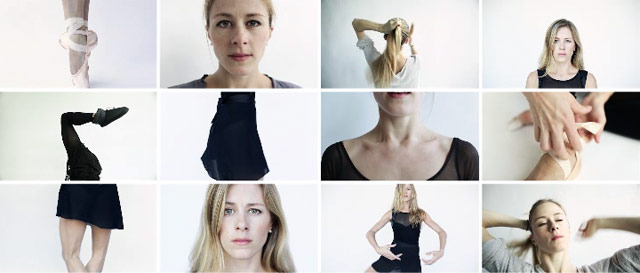
Heather Ogden is a principal dancer for the National Ballet of Canada and The Heather Project is a series of short videos shot by Christopher Wahl that shows how beautiful and demanding ballet can be. (via cup of jo)
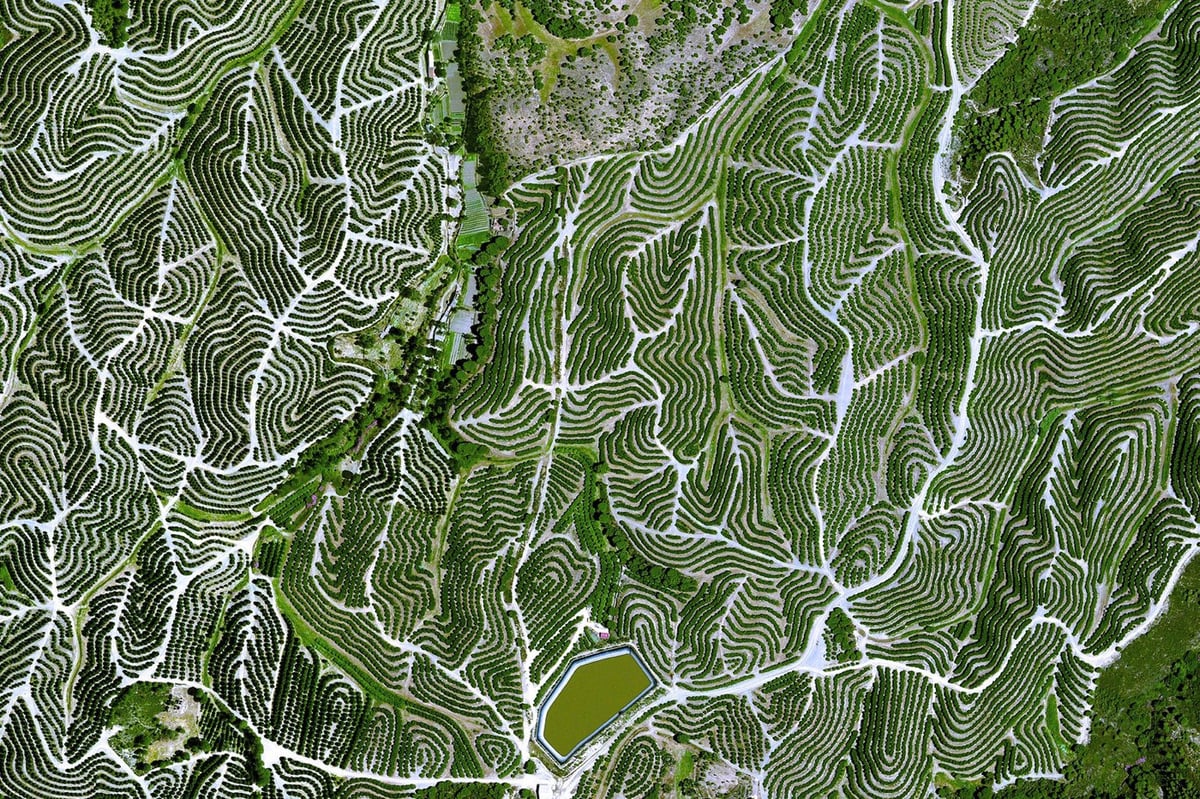
The Daily Overview offers up an interesting satellite photo every day. The site’s name is inspired by the Overview Effect:
The Overview Effect, first described by author Frank White in 1987, is an experience that transforms astronauts’ perspective of Earth and mankind’s place upon it. Common features of the experience are a feeling of awe for the planet, a profound understanding of the interconnection of all life, and a renewed sense of responsibility for taking care of the environment. ‘Overview’ is a short film that explores this phenomenon through interviews with five astronauts who have experienced the Overview Effect. The film also features important commentary on the wider implications of this new understanding for both our society, and our relationship to the environment.
The Planetary Collective made a short documentary about the Overview Effect:
(thx, pavel)
Photographer David Liittschwager captured the little ecosystem of life contained in a splash of seawater magnified 25 times:
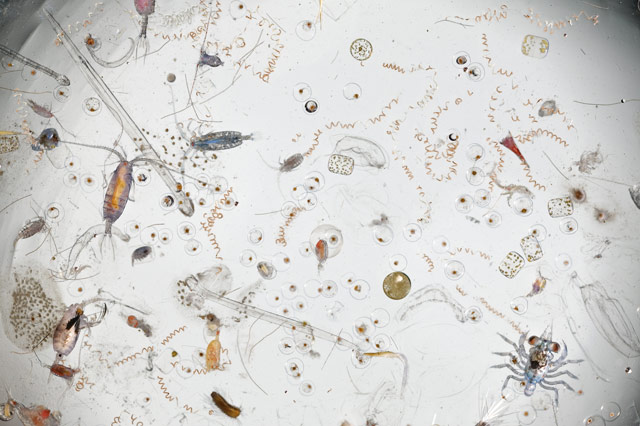
It’s the microscopic equivalent of the Hubble Deep Field image and worth seeing larger. Here’s part of the larger image:
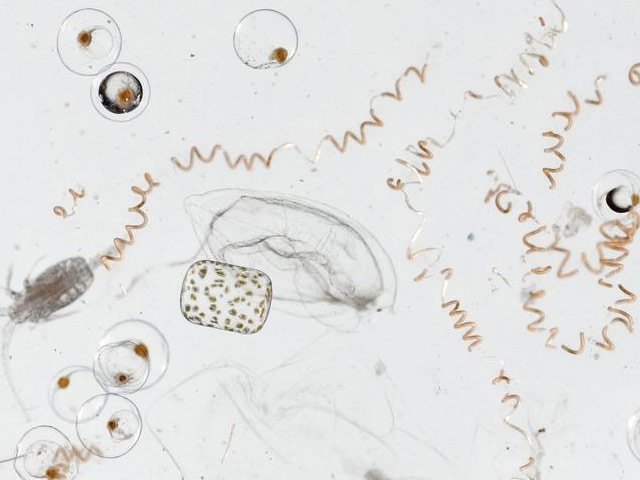
Liittschwager took the photo for National Geographic, but it also might be contained in his book, A World in One Cubic Foot, in which he took photos in locations all over the world of the life that passed through 1 cubic foot of space in 24 hours.
For A World in One Cubic Foot, esteemed nature photographer David Liittschwager took a bright green metal cube-measuring precisely one cubic foot-and set it in various ecosystems around the world, from Costa Rica to Central Park. Working with local scientists, he measured what moved through that small space in a period of twenty-four hours. He then photographed the cube’s setting and the plant, animal, and insect life inside it — anything visible to the naked eye. The result is a stunning portrait of the amazing diversity that can be found in ecosystems around the globe.
Prints of this image are available at Art.com in sizes up to 64”x48”. (via colossal)
Swedish artist Hans Jörgen Johansen makes photographs of mold landscapes, grown in his studio from flour and bread.
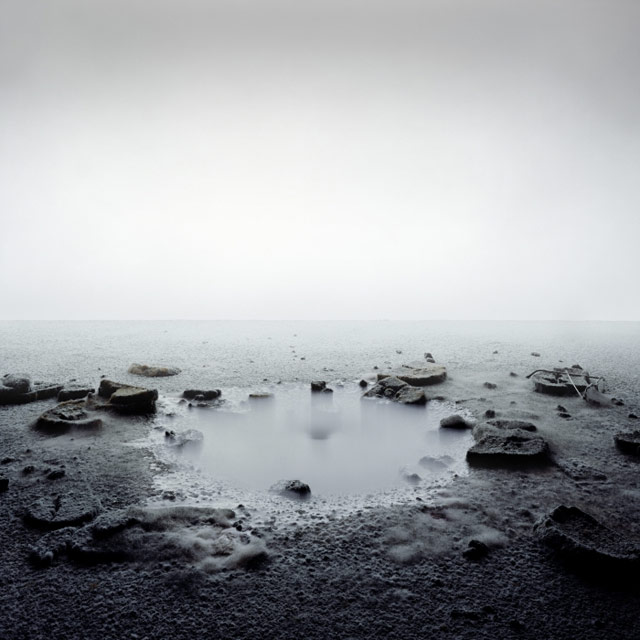
Over at In Focus, Alan Taylor has posted the first part of a 10-part photographic retrospective of World War I.
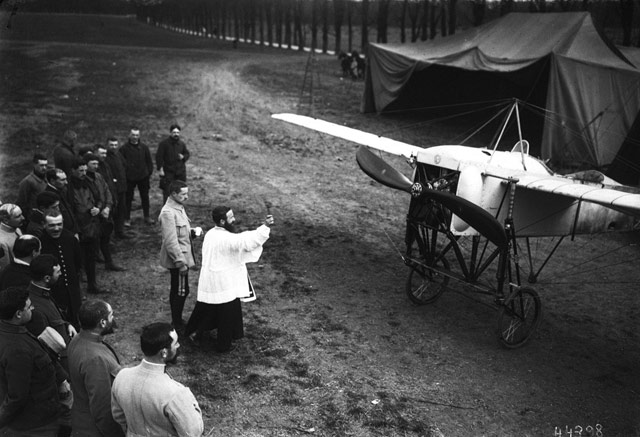
Represented in this first installment is early color photography (many more of which can be found here), dazzle camouflage, and a photo I’ve never seen before of an aerial view of the trenches of the western front. Can’t wait to follow along with the rest of it.
Stay Connected